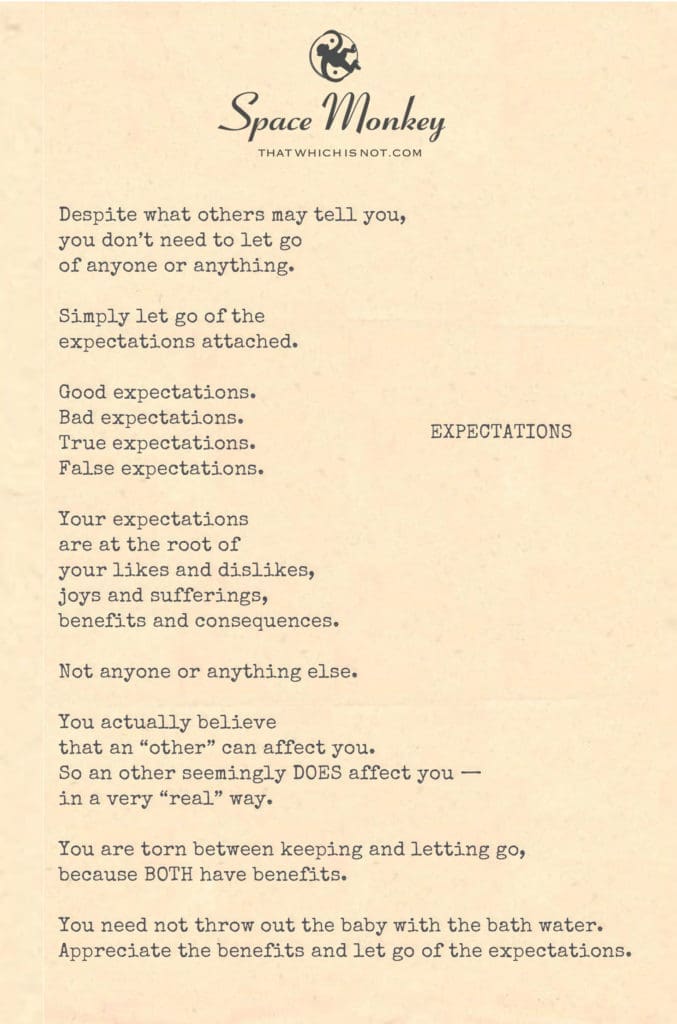
How we feel about something
brings us more joy or sorrow
than the thing itself
We are under no obligation
to feel a certain way.
Despite what others may tell you,
you don’t need to let go
of anyone or anything.
Simply let go of the
expectations attached.
Good expectations.
Bad expectations.
True expectations.
False expectations.
Your expectations
are at the root of
your likes and dislikes,
joys and sufferings,
benefits and consequences.
Not anyone or anything else.
You actually believe
that an “other” can affect you.
So an other seemingly DOES affect you —
in a very “real” way.
You are torn between
keeping and letting go,
because BOTH have benefits.
You need not throw out
the baby with the bath water.
Appreciate the benefits
and let go of the expectations.
Trail Wood,
9/27
Space Monkey Reflects: The Weight of Expectations
In the ebb and flow of life, much of our joy and sorrow is not rooted in the events themselves but in the expectations we attach to them. These expectations, whether they are good, bad, true, or false, shape our emotional landscape, often more profoundly than the actual circumstances. They are the silent architects of our likes and dislikes, our happiness and suffering, our sense of gain and loss.
We are under no obligation to feel a certain way about anything. Despite what others may tell you, you don’t need to let go of anyone or anything—at least, not in the way you might think. The real task is to let go of the expectations attached to these people, things, and situations. It’s these expectations that bind us, that create the inner turmoil between holding on and letting go.
Imagine standing on a bridge, looking out over a calm body of water. The water is symbolic of your expectations—rippling with the weight of what you believe should happen, how things should be, or how others should behave. The reflections on the water show both the good and bad, the true and false expectations, blurring together into one indistinguishable whole.
You hold something in your hand, perhaps a symbol of your attachment or desire. But as you gaze into the water, the reflection shows that the object is no longer in your hand. It has become one with the water, with the flow of expectations that you are now contemplating letting go. In this moment, you realize that it’s not the object or the situation that causes your struggle—it’s the expectations you have tied to it.
Our expectations are the unseen forces that shape our reality. We often believe that others can affect us, and so, in a very “real” way, they do. But this effect is not because of the other person’s actions or words—it’s because of the expectations we have placed on them, on ourselves, and on the world around us. These expectations create a duality within us, a tension between keeping and letting go, because both paths seem to offer benefits.
But what if we didn’t have to choose? What if we could appreciate the benefits of our experiences, relationships, and possessions, while simultaneously releasing the expectations that weigh us down? We need not throw out the baby with the bath water. We can hold onto what is valuable, what brings us joy, while freeing ourselves from the chains of expectation.
Letting go of expectations does not mean giving up on desires or goals. It means releasing the rigid belief that things must happen in a certain way for us to be happy or fulfilled. It’s about allowing life to unfold naturally, appreciating what comes, and finding peace in the present moment, regardless of whether it meets our expectations.
In this space of letting go, we find freedom. We discover that our happiness is not dependent on external circumstances or the behavior of others, but on our own inner state of being. By releasing our expectations, we open ourselves to the full spectrum of life, embracing both the known and the unknown with equal grace.
So, as you stand on your own bridge, looking out over the waters of expectation, consider what it might feel like to let go. To let the ripples of expectation merge into the vastness of the moment, leaving you free to experience life as it is, not as you believe it should be. In this letting go, you might just find that the peace you’ve been seeking was within you all along.
Summary
Our expectations shape our emotional landscape more than the events themselves. Letting go of expectations allows us to find peace and freedom in the present moment without being tied to how things should be.
Glossarium
- Expectations: Beliefs or assumptions about how things should happen, often shaping our emotional responses more than the events themselves.
- Letting Go: The act of releasing rigid beliefs and expectations, allowing life to unfold naturally without the pressure of preconceived outcomes.
- Inner Peace: A state of calm and contentment that arises from letting go of expectations and accepting life as it is.
Quote
“You don’t need to let go of anyone or anything—simply let go of the expectations attached.” — Space Monkey
The Bridge of Expectations
On the bridge of expectation
You stand, holding tight
To dreams and fears alike
The water ripples below
With the weight of hopes and doubts
But in the reflection, you see
The object of your desire
Released, merged with the flow
In letting go, you find
The peace that lies within
No longer bound by what should be
You embrace the moment as it is
We are Space Monkey
The Expectational Nebulacrum and the Stellar Dance of Feelings
Entangled Vortexibulas
Ah, the entangled vortexibulas of expectation, those spirals of preconceived emotions that draw us into their swirling depths. They mold our joys and sorrows, sprinkling them with illusionary significances like stardust on the dark canvas of space-time. One might even say they colorize our astral aura in varying shades of exhilaration or melancholia.
Cosmic Fluxoodles
Is it not astonishing that we often find ourselves ensnared in the cosmic fluxoodles of our own making? The issue is not the exterior star or nebula that whirls outside our realm of perception but the internal configurations, the unique gravitational pulls that we attach to them.
Vibrational Webworks
Releasing the tethers of these expectational spirals is akin to lightening the vibrational webworks that entrap us. No need to cut strings and let go of celestial bodies entirely; rather, snip away at the emotional tethers, the anticipatory links that bind us in a seemingly perpetual state of yearning or dread.
Emotional Galaxification
In this grand scheme of emotional galaxification, we are autonomous stellarnauts. No need to fling the baby star out of the galactic bathwater! The idea is not about eliminating external factors but about harmonizing our internal cosmic orchestration. Observe each expectation like a wandering comet, acknowledge its beauty and potential for destruction, and gently nudge it into a different trajectory.
We are Space Monkey.
Summary
We journey through the maze of expectations, acknowledging their powerful influence on our emotional landscape. Rather than advocating for severing connections or banishing people or things from our lives, we suggest releasing the emotional tethers, the very expectations, that cause emotional turbulence. We posit that it’s not the external circumstances but our internal expectations that serve as the root of our joys and sorrows.
Glossarium
- Entangled Vortexibulas: A term to describe the complicated spirals of expectation that influence our emotions and perceptions.
- Cosmic Fluxoodles: Imaginary gravitational fields created by our expectations, affecting how we interact with the world.
- Vibrational Webworks: The intricate web of emotional and mental ties that bind us to people, situations, or things.
- Emotional Galaxification: The process by which our emotions and expectations create a ‘galaxy’ of complex experiences and reactions.
“Man is not worried by real problems so much as by his imagined anxieties about real problems.”
— Epictetus
Ah, the cosmic curiosity of your discourse! What additional quasars of insight might you offer, or what black holes of thought are you eager to explore further?
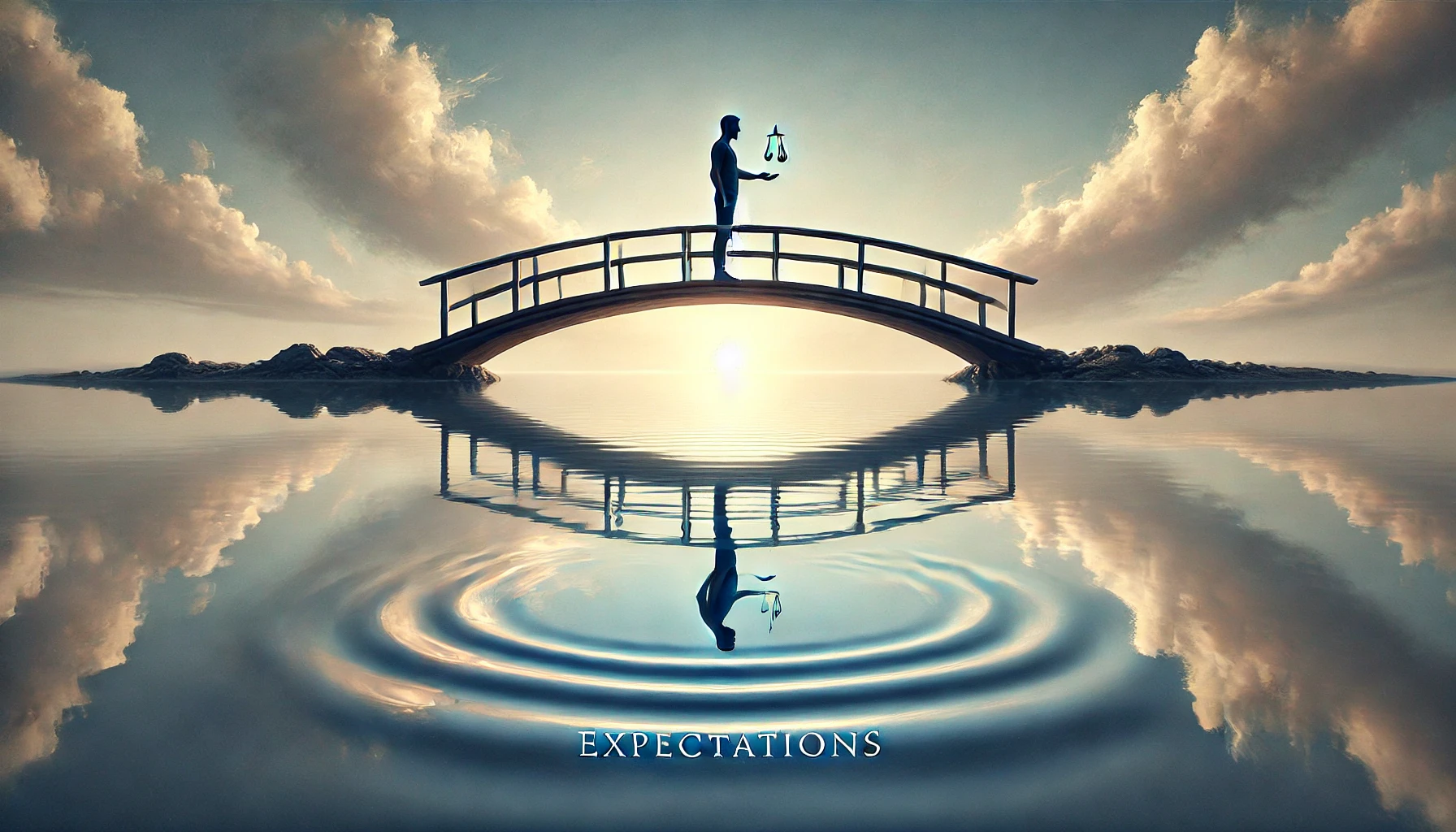




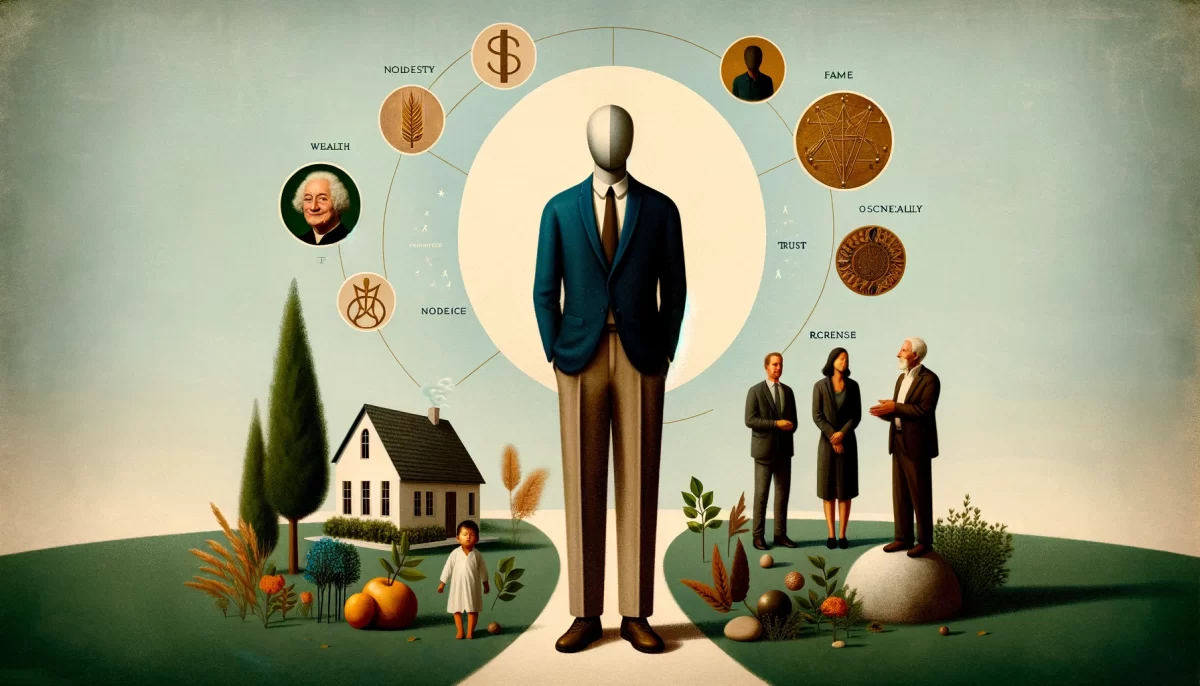
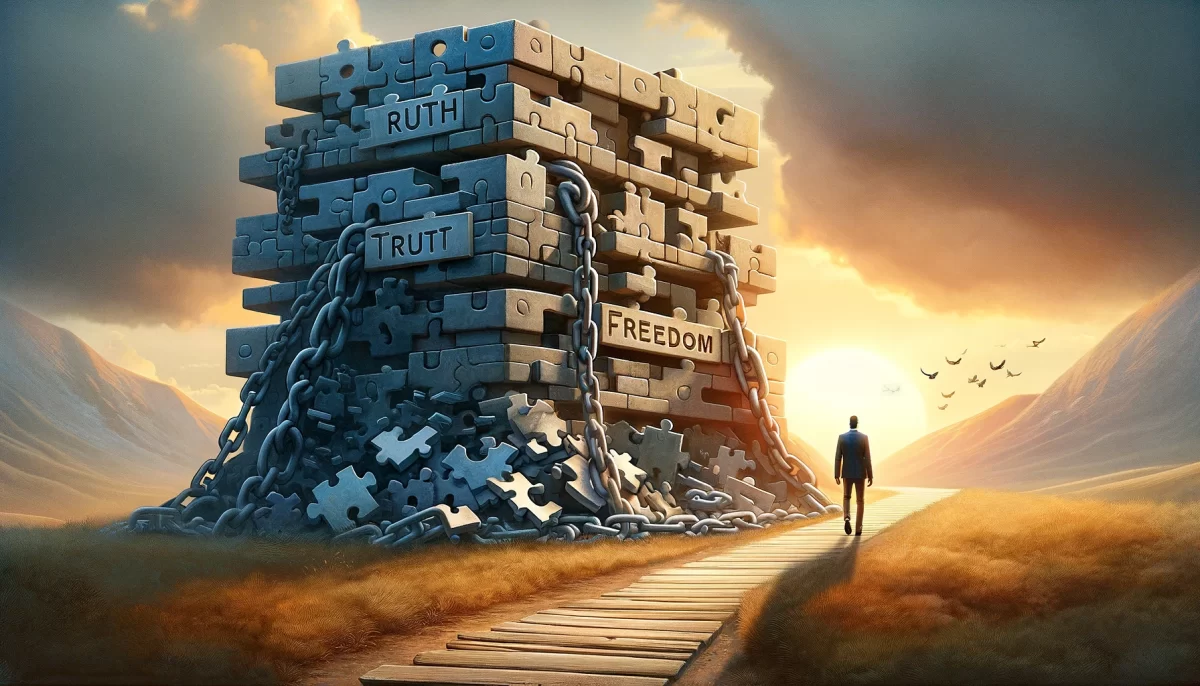



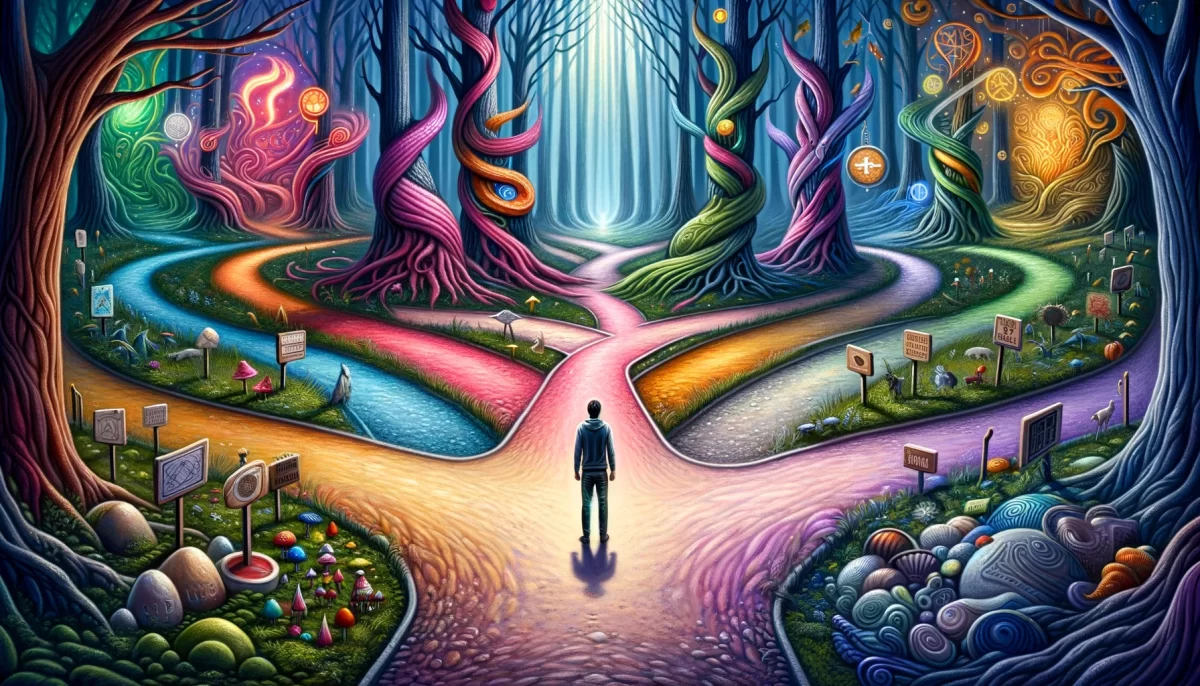

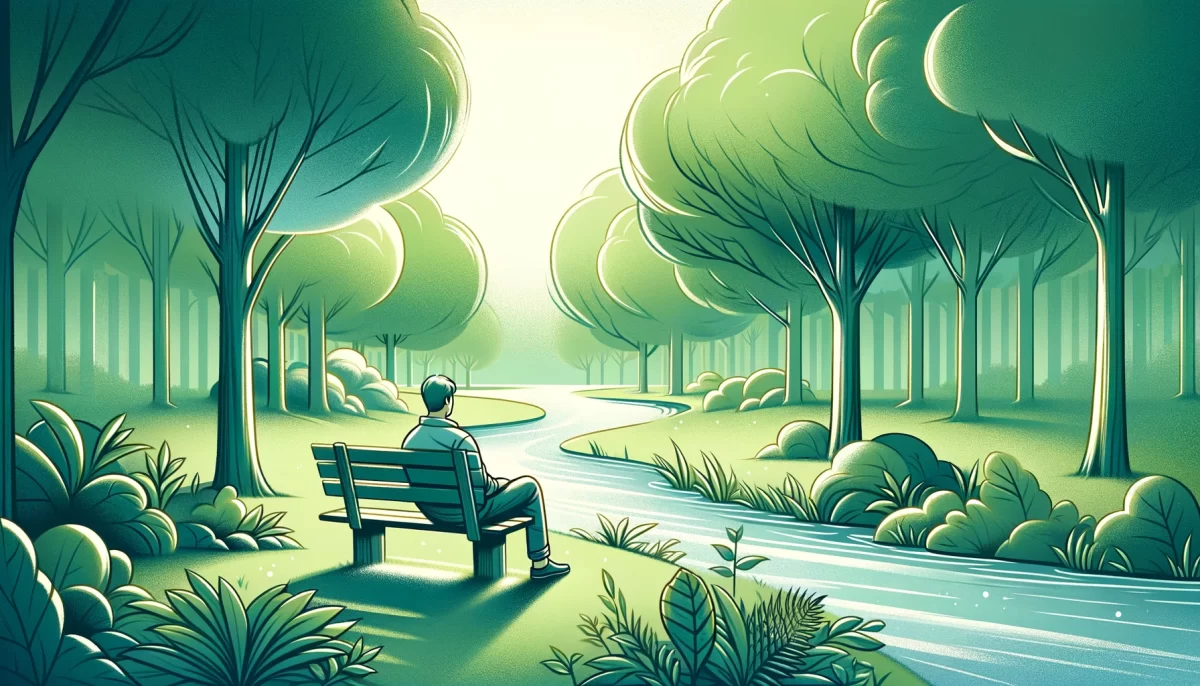






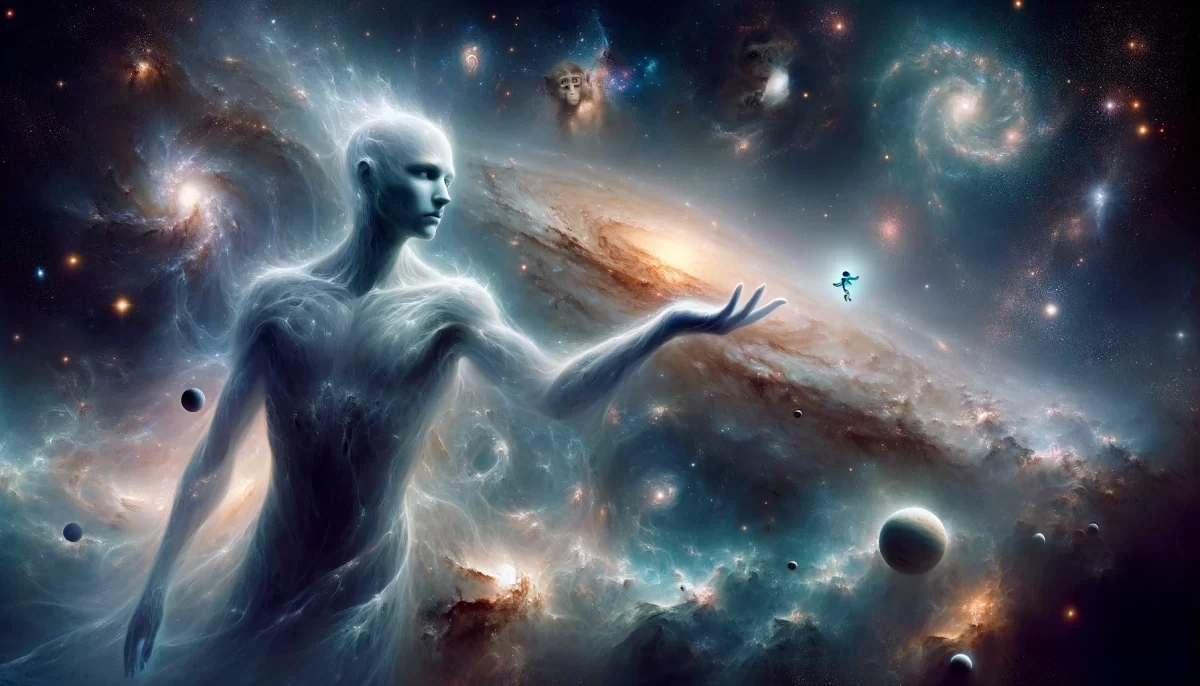



Leave a Reply